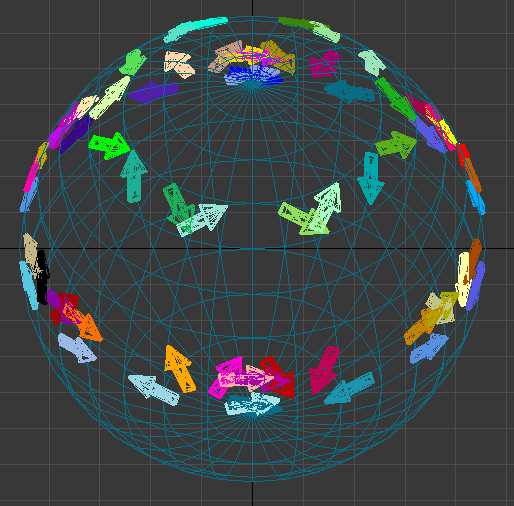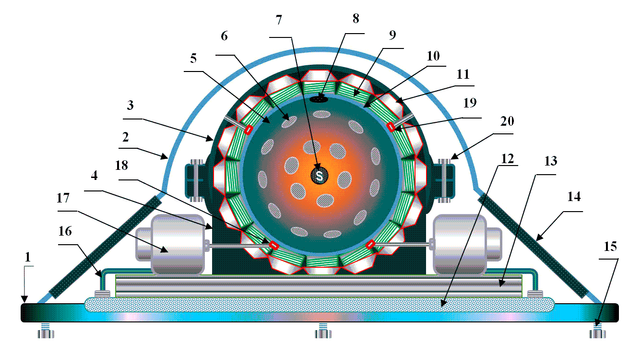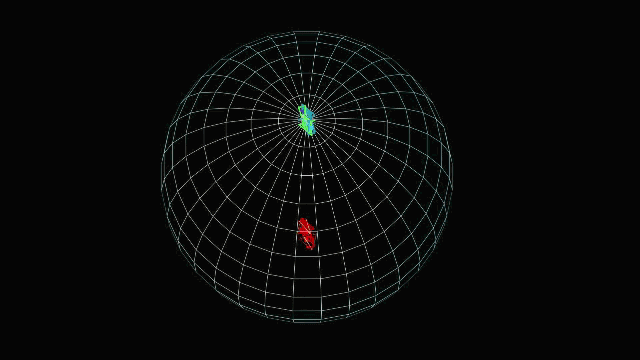Holographic Principle
The physical theory is created to describe the real world, but without experimental confirmation, remains only a theory. Example, the theory of relativity has actually become an engineering science. Thanks to the development of accelerator technology, it became possible to disperse very light particles, such as an electron, a proton, atomic nuclei and we have ultrarelativistic velocities. These experiments daily performed on accelerators in many scientific centers and one of them showed any deviations from the main corollaries of the theory. It also happens with the fundamental theory - the Holographic Principle, which consistently includes the theory of relativity and quantum mechanics and soon can become an engineering science.
Today, the Holographic Principle - is hundreds of theoretical works by famous world-class physicists: G. 't Hooft, L. Susskind, J.D. Bekenstein, E. Verlinde, J.M. Maldacena, R. Bousso .... . Already there are experimental studies confirming the operation of the Holographic Principle. Since 1997, more than 10,000 works have been published supporting this idea.
Understanding of the emergent nature of space-time and gravity comes from the laws of black hole thermodynamics and the Holographic Principle was born after expansion of the laws thermodynamics for the surface all universe. J. D. Bekenstein has suggested a deep connection between gravity and thermodynamics. Through several decades of research and experimentation, physicists have brought forth a unified theory of the universe that is based on information theoretic principles. The Holographic Principle states that the entropy of ordinary mass (not just black holes) is also proportional to surface area and not volume; that volume itself is illusory and the Universe is really a hologram which is isomorphic to the information "inscribed" on the surface of its boundary horizon - holographic screen.
I managed on the computer simulator to get this holographic screen and at the same time the dynamics of quantum particles on it from one very simple formula.
One of the modern methods for analyzing various data is the method of computer data visualization, or otherwise - the method of scientific visualization. The main task of the method of scientific visualization is to make the invisible visible. As invisible, both abstract and real objects and phenomena that are not accessible to the human eye can appear: macrostructures like galaxies, their clusters, as well as microstructures at the level of apples, nanostructure: molecules, atoms and finally, quantum particles and their projections and all this belongs to the real world.
If we load the equation of motion of a point in the computer simulator, we can see its dynamics. We take any point in the universe and produce its angular motions around one axis of the Cartesian coordinates. After loading the formula on the simulator screen in an isometric view, we observe an ordinary circular turn of the point in a circle. But already in the interesting way, there is a rotation of a point around two axes per cycle, options appear. But even more surprising is all possible angular displacements of this point around the three axes.
As soon as we unload the formula for the angular displacements of this point around the three axes in accordance with the harmonic laws, we can see emerge of the spherical screen and projections of all elementary particles of the Standard Model. We can observe numerous properties of the set of particles obtained from one extremely simple formula. This is equivalent to if you connected to the TV the random number generator made and in the result, on the screen you can see your favorite movie.
If this point belongs, for example to the spherical rotor of a gyroscope, then we get an unusual gyroscope. The rotation of a spherical rotor in a vacuum around three Cartesian axes per cycle must have new unknown properties and we can have the new very interesting device - unusual gyroscope.
The result of the simulator demonstrates the practical possibilities that can be obtained using an unusual gyroscope. Here is not a complete list of such opportunities.
- Control of gravity.
- Exchange of information without limit of the speed of light.
- Transformation of the accelerated expansion of the holographic screen into inexhaustible ecological clean electric or thermal energy.
- A fundamentally new way of measuring in cosmology.
- A fundamentally new way of measuring in the field of quantum mechanics. 6. And most importantly - the proof of the Holographic Principle ... .
One of the arguments in favor of the reliability of computer quantum simulation of the dynamics of the projection of particles is its natural appearance from one concise parametric equation of coherent oscillations. The first thing that is observed in the quantum simulator after its launch is the dynamics of the projections of particles of three generations on a spherical holographic screen
(today we can declare why there are only three).
On the quantum simulator, you can see a picture in which there are pairs of diametrically located projections of particles, which in themselves do not have mass. We give these particle projections the names «Is» and «AN». Being massless projections, they move along diametrically opposite sections of the holographic screen have speed of light, but instead it can be observed on the quantum simulator that they «rock» back and forth on it, and the forward motion of the particle «Is» continuously turns into a backward motion of the particle » AN «, and vice versa. In fact, this is the realization on the holographic screen of a phenomenon called «zitterbewegung» in quantum physics and consists in the fact that the instantaneous movement of an electron, for example, because of participation in such vibrations, always occurs limit speed of light, although the full the average motion of an electron is characterized by a velocity less than the speed of light. Therefore for the projection center (electron), the locality principle does not break. Each of these ingredients has a spin of 1 / 2ℏ in the direction of motion corresponding to the left rotation in the case of the projection of the particle «Is» and the right for the projection of the particle «AN». The real motion of the projections of the electron «Is» and «AN» is composed of a large number of such separate processes so that the observed motion of the electron can be regarded as the result of some «averaging».
After running the quantum simulator on a spherical screen, we can see special points — the poles of the sphere and the cluster points, the discrepancies between the projections of the particles. They can be identified as specific interaction points for particles and as nodes for the formation of complex composite particles. For composite particles, some of the projections consist of more complex sets of their angular movements. More complex composite particles, in physical terms, have more «windings» of projections on the surface of the sphere of the holographic screen. The number of such "windings" tells us about the multiplicity of the mass of particles to the mass of an electron, which previously could not have been understanding.
To each fundamental fermion, there corresponds an antiparticle with the same mass. All the charges of the antifermion are opposite. Projections of antiparticles moving «backward in time» are also important for research, but they are still excluded from consideration in the quantum simulator. The trajectories projections of particles and antiparticles completely coincide, but the directions of motion are opposite, and this explains their complete annihilation.
This is by no means a complete agreement between the data obtained at accelerators and what one very simple formula of coherent oscillations demonstrates.
Since one formula demonstrates the set of properties of elementary particles experimentally obtained on accelerators, it allows us to assert that we are dealing with a coherent law of evolution.
All reasoning and conclusions obtained as a result of observation on the computer simulator for the dynamics of particle projections require verification on the operating model of an unusual gyroscope since the formula describing the motion of the rotor is the same.
Postulate: "If the quantum probabilities are not only preserved, in the ontological basis they stay the same all the time then we can idealized demonstration them by the single equation of coherent oscillations. We can define probabilities to be a positive function of the amplitudes".
In the quantum simulator fragments of computer calculations of angular displacements are shown - a geometrical representation of the probability density of some projections of particles constructed by combinations of coherent oscillations from one parametric equation or a coherent evolution law:
(θx=Cosθ
(θy=Sinθ
(θz=-Sinθ
The angular displacement of any pre-selected point around the corresponding axes: θx, θy, θz and parameters θ= πt and -1 ≤ t ≤ 1, Δt → 0; θ - is geometrical angle admeasured by arbitrary clockwise and/or anticlockwise direction, starting from the relevant semiaxis, and t sets the needed accuracy of angular rotations. The equation is given parametrically, and it is applicable for any radius.
It is easy to calculate the maximum number of directions of oscillations. N max = 2 ^ 6 - 4 = 60. This the number of elementary particles of the Standard Model.
So we have one formula that leads to the evolution of the system - the emergence of a holographic screen and demonstrates the many properties of the particles of the Standard Model.



Hi! I am a robot. I just upvoted you! I found similar content that readers might be interested in:
http://isan.com.ua/
TNX!
This is my site, welcome!